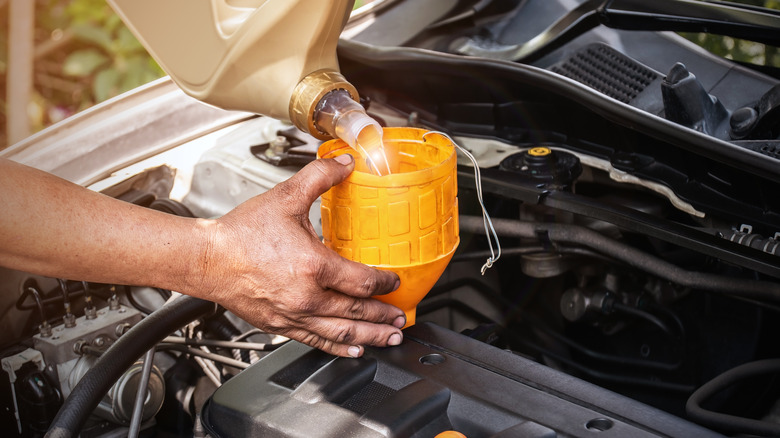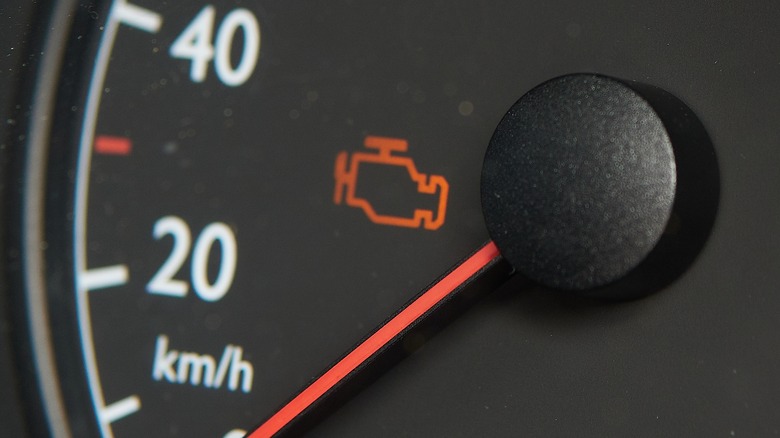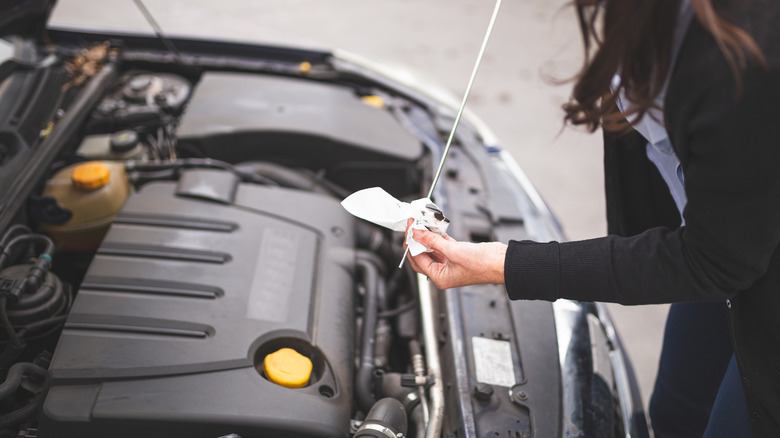Can Your Check Engine Light Come On For Low Oil?
Your car's dashboard symbols generally fall under one of two categories: specific indicators with a single clear meaning and broad warnings with multiple potential causes. Specific indicators like the low fuel warning, seat belt light, and door ajar alert are pretty easy to fix since they can only mean one thing.
On the other hand, broad warnings usually require a professional diagnosis to pinpoint the exact problem. One of these broad warnings is the check engine light. When you see the check engine light pop up on your dashboard, you won't automatically know what malfunction it's telling you about. It can mean that a problem in the engine was detected, your gas cap is loose, there's a malfunctioning sensor somewhere, or the spark plug is already worn out, among many other causes.
But is it possible for low oil to trigger your check engine light? Well, technically yes, your check engine light might come on due to low oil. However, it usually doesn't outright do so just because your oil is already below the minimum recommended level. By the time you do see the check engine light on your instrument panel, you're likely already facing problems bigger than a simple oil top-up.
The connection between low oil and the check engine light
While there are many reasons why your check engine light (CEL) may be on, your car having insufficient oil alone wouldn't directly trigger it. Instead, it's the many engine issues caused by low oil that would make the CEL light up. One such issue is related to the exhaust camshaft, the mechanical component that controls the timing of a V-style engine's valves. When your car is running low on oil, there wouldn't be enough oil pressure to create this proper timing. This means your engine would start malfunctioning, and you might notice signs like the car idling poorly or suddenly stalling.
Your CEL will also come on if your catalytic converter is damaged or failing. A part of the exhaust system, this component converts the harmful gases your car produces to less toxic emissions. If you have low oil, your engine might end up misfiring, which, in turn, would deliver excessive amounts of hydrocarbons (raw, unburned and partly burned fuel) into the converter that ultimately overheats and damages it.
The oil in your engine is responsible for keeping things lubricated and running as smoothly as possible. Once the oil falls under the required threshold, though, expect more friction in the engine. This could eventually lead to components like piston rings or seals wearing out faster than usual. If they break, you're then bound to get oil on your spark plug, and as you're already aware, a bad spark plug would turn on the check engine light on your dashboard.
What to do to avoid low oil-related engine issues
While it's true that low oil will indirectly trigger your check engine light, don't wait for this specific warning icon to come on before checking your car's oil levels with a dipstick. Manufacturers recommend looking at your engine oil level on a monthly basis instead. This way, you can ensure your engine stays safe and lubricated as you drive.
If you forget to change or top up your oil before it becomes exceedingly low, you'll then get a low engine oil pressure symbol on your instrument panel. This icon looks like a genie lamp with a drop of oil dripping out, so it wouldn't be hard to identify. Plus, it should automatically light up way before your check engine light does. As long as you heed this warning and add oil when necessary, you're less likely to run into engine problems due to low oil.


